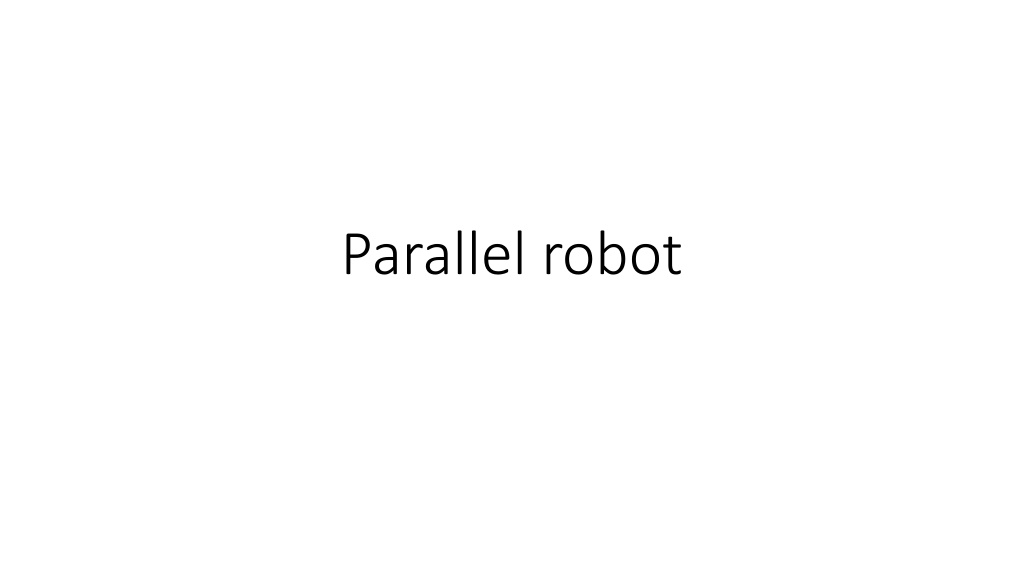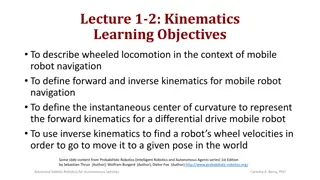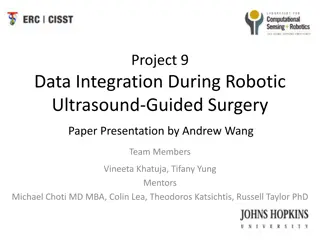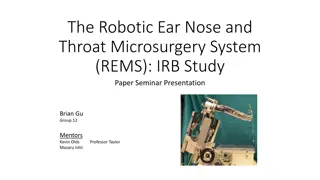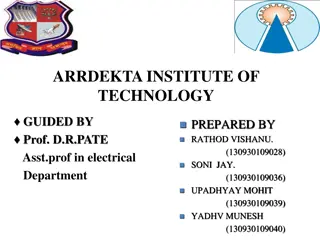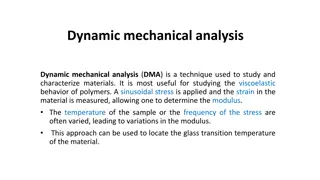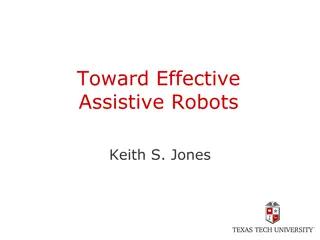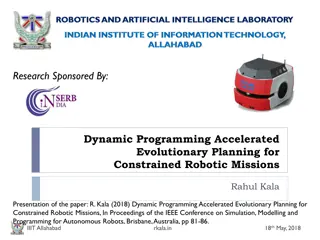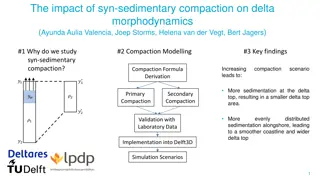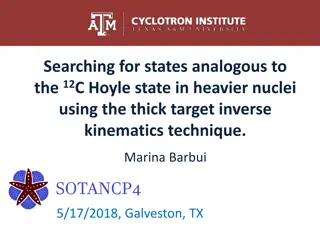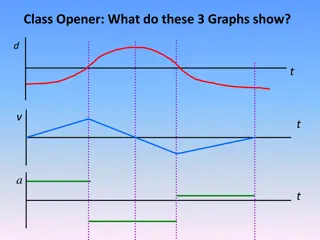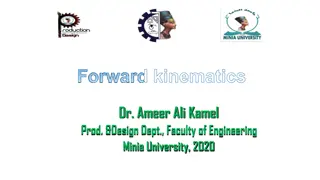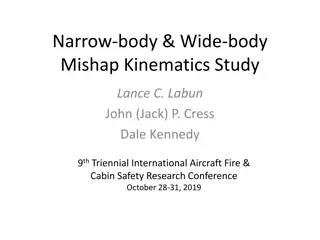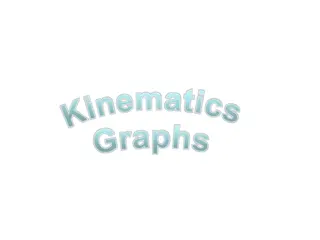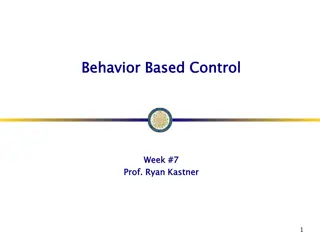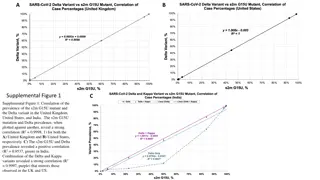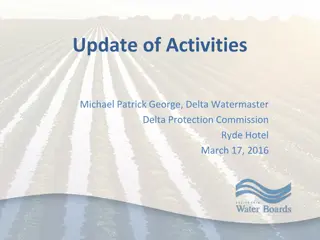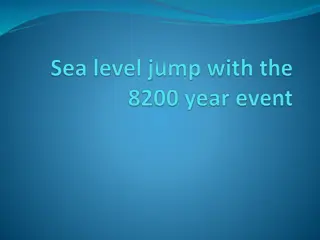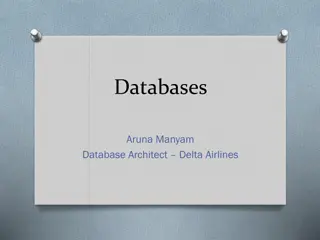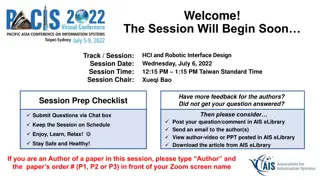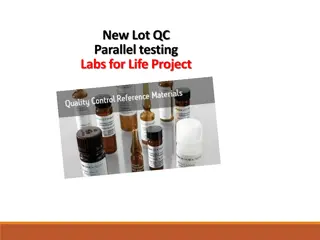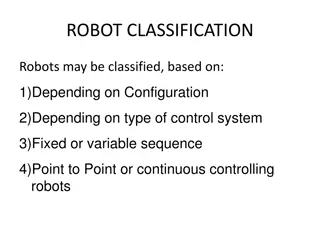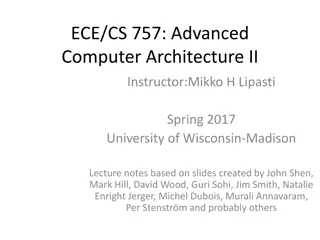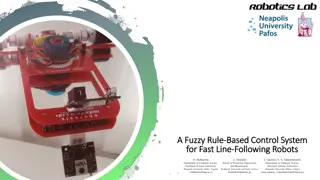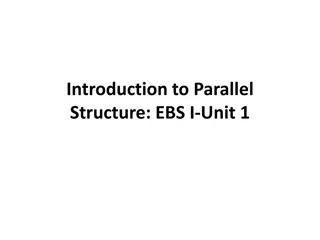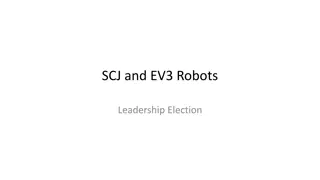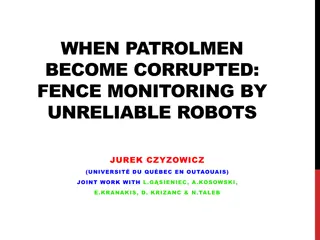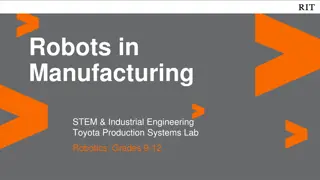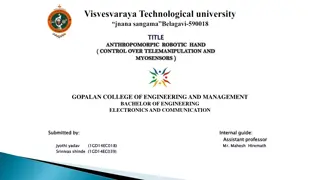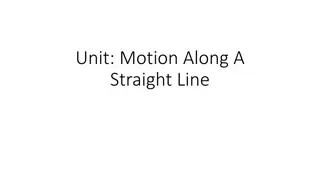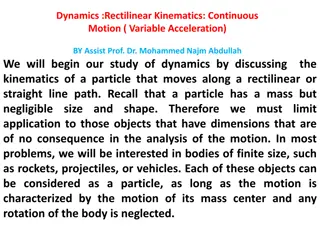Robotic Kinematics & Control: Exploring Parallel Robots & Delta Robots
Discover the fascinating world of robotic kinematics and control through the exploration of parallel robots, Stewart platforms, inverse kinematics, forward kinematics, multiple solutions, and Delta robots. From understanding the structure of control variables to solving kinematic equations, this content delves into the intricate mechanics of advanced robotic systems. Learn about the work of Prof. Kevin Lynch and Frank Park in "Modern Robotics: Mechanics, Planning, and Control," and gain insights into manipulating end-effector positions and joint values in robotic systems. Dive into the dynamics of Stewart platforms, the complexities of inverse kinematics, and the capabilities of Delta robots in translational control within their workspace.
Download Presentation

Please find below an Image/Link to download the presentation.
The content on the website is provided AS IS for your information and personal use only. It may not be sold, licensed, or shared on other websites without obtaining consent from the author. Download presentation by click this link. If you encounter any issues during the download, it is possible that the publisher has removed the file from their server.
E N D
Presentation Transcript
Stewart Platform DoF N=6x(membri-1)-4xcoppie= =6x(14-1)-4x18=6
Video Structure https://www.youtube.com/watch?v=WmKnnp1xTPg Apelmann (offshore application) https://www.youtube.com/watch?v=aBn7w1S8MtY Modified Stewart Platform (for simulators) https://www.youtube.com/watch?v=PIl8Epy9xIw https://www.youtube.com/watch?v=zNUBZfrOXUc&t=28s
Source: https://www.youtube.com/watch?v=5wCK6XGC3ig&list=PLggLP4f-rq02vX0OQQ5vrCxbJrzamYDfx&index=33 Prof: Kevin Lynch and Frank Park book "Modern Robotics: Mechanics, Planning, and Control,"book "Modern Robotics: Mechanics, Planning, and Control,
Inverse Kinematics: given the end-effector position, calculate the values of the joints ?? b is the end-effector frame s is the base frame ???(?) is the rototranslation matrix from b to s (it is known) ??? and ??? are parameters (vectors) ???= ?????? Now it is possible to calculate the joint variables ??= ??? ???
Forward Kinematics: given ??, calculate ???(numerical methods) Multiple solutions Example: the RPR has up to 6 solutions Example: Stewart platform up to 40 solutions Only 4 are the real ones usually
Delta robot source: The Delta Parallel Robot: Kinematics Solutions, The Delta Parallel Robot: Kinematics Solutions, Robert L. Williams II, Robert L. Williams II, Ph.D Ph.D. . The top revolute joints are actuated via base-fixed rotational actuators.
Structure control variables are ??, i =1,2,3 about the axes shown. The universal (U) joints are implemented using three non-collocated revolute (R) joints (two parallel and one perpendicular, six places) The three-dof Delta Robot is capable of XYZ translational control of its moving platform within its workspace.
PointsB_i are the hips, points A_i are the knees, and points P_i are the ankles. The side length of the base equilateral triangle is sBand the side length of the moving platform equilateral triangle is sP. The fixed base Cartesian reference frame is {B} The moving platform Cartesian reference frame is {P} The orientation of {P} is always identical to the orientation of {B} so rotation matrix ?? ?= ? The joint variables are ??, Cartesian variables are x y z
Dof If we consider all the constraints N=6x(membri-1)-5xcoppie= =6x(17-1)-5x21=-9 !!!!!!! The robot is overconstrained. If we remove one of the long parallel four-bar mechanism links, along with two revolute joints each the kinematic doesn t change N=6x(membri-1)-5xcoppie= =6x(14-1)-5x15=3
Kinematics Kinematic chain Kinematic chain Constraints on the leg lengths Function of the joint variables End-effector coordinates Geometric parameters
Inverse kinematics problem The inverse position kinematics (IPK) problem is: Given the Cartesian position of the moving platform control point (the origin of {P=x,y,z}), calculate the revolute joint angles . The IPK solution for parallel robots is often straightforward but the IPK solution for the Delta Robot is not trivial, but can be found analytically. The IPK problem can be solved independently for each of the three RUU legs. Geometrically, each leg IPK solution is the intersection between a known circle (radius L, centered on B_i) and a known sphere (radius l, centered on the moving platform vertex P_i)
Forward Position Kinematics ( Forward Position Kinematics (FPK The 3-dof Delta Robot forward position kinematics (FPK) problem is stated: Given the three actuated joint angles, calculate the resulting Cartesian position of the moving platform x,y,z. FPK) Solution ) Solution The FPK solution for parallel robots is generally very difficult. Thanks to the translation-only motion of the 3-dof Delta Robot, there is a straightforward analytical solution. Since ??are given, we calculate the three absolute vector knee points using Then we define three virtual sphere centers Therefore, the FPK unknown point x,y,z is the intersection of the three known spheres centered in A_iv
Combination of parallel robots https://www.youtube.com/watch?v=mlfn6EpGA40 VI-Grade
Exercise in matlab: Forward kinematics of a 2DoF parallel robot use Newton-Raphson Omron X-Delta 2+1
